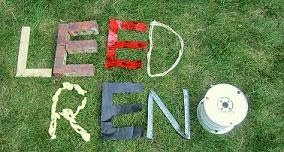I gave him a vague nebulous answer which I doubt actually satisfied any of his curiosity. I wasn't trying to be evasive, it is just a very hard question to answer. The reason being is that the costs come from a lot of different sources and some of the benefits are hard to quantify.
Comparing this renovation project to a traditional reno the bulk of the additional costs come from three areas:
Material Costs
LEED provides points for using environmentally friendly material. Products either containing no VOCs, manufactured out of greener material or greener practices. It is important to note that these are almost exclusively points and not pre-requsites. Meaning you can choose these materials to earn points towards certification but you are not required to.
Efficiency Upgrades
A big part of LEED, is having an efficient home. Better insulation, better dealing, better heating, etc. Which obviously all costs money. This category can provide 38 LEED points, almost enough for your certification. It also has a minimum requirement, your home needs to have an ERS or Energuide rating of at least 76 (although that will probably go up in the next update of the rating system). Efficiency upgrades though are the easiest to quantify financial benefits as they reduce heating / cooling costs.
Scope of Project
Realistically, this is where our costs are driven up the most. LEED for homes was developed for new homes or Gut/Rehab renovations where the entire house is stripped down and re-built. To try and do this work as a DIY home renovation project is a challenge. Worked great in the kitchen because our plan there involved knocking out walls and removing all the counters and cabinets. But we will have to go into the kids rooms and strip down the ceiling and exterior walls to re-insulate in there too. It has value in doing but honestly wouldn't happen if it wasn't for LEED. Other examples:
- Fireplace upgrade
- Water heater upgrade
- Landscaping
- Garage ventilation
- Radon testing
- Deconstruction / Construction waste management
Some of those cost money, some cost time but they all increase the scope and ultimately the cost of the project.
I will save the other two of the above for future posts, but will dig in a little further in this one on material costs.
Do green materials cost more? Depends on the baseline. If we look at the scale between the cheapest version available of a product and the most expensive, the green options usually fall squarely in the middle. As examples my last three purchases were:
3" Window mouldings
 Cheapest available: $0.17 / foot, simple generic profile, mdf
Cheapest available: $0.17 / foot, simple generic profile, mdfMost expensive: $4 / foot, solid pine
Green option purchased: Spero eco-wise mouldings, recycled wood fibre, with no urea-formaldehyde $0.85/ foot
Benefits: reduced environmental impact, improved air quality, healthier home
Kitchen Countertop
Cheapest available: Ikea laminated particleboard countertop, $5 / sq ft
Most expensive: Granite countertop, $120 / sq foot (although some stainless steel products can go up to $200 / sq foot)
Green option purchased: Zodiaq recycled glass countertop, <$100 / sq ft
Benefits: reduced environmental impact, appearance, low maintenance
Lumber
Only option at Rona: FSC select lumber
This made it easier to comply with LEED criteria when the store I regularly shop at only had FSC (Sustainable managed forestry practices) 2 x 4s available
So will a green renovation be the cheapest renovation option available: no. The most expensive: probably not. I would say it falls in the mid-range to upper mid-range. The return on investment: good quality products with a high end appearance that make your home and the environment healthier.
